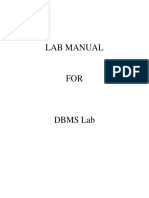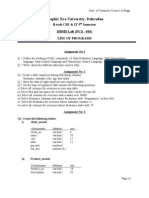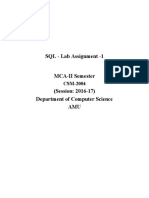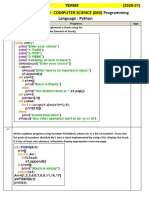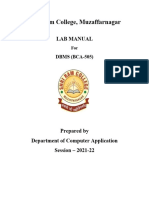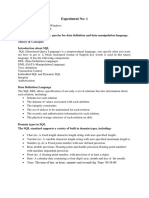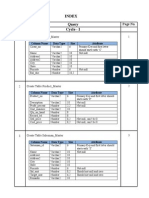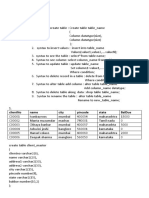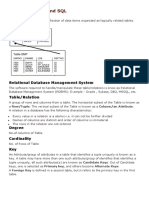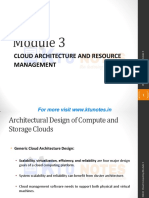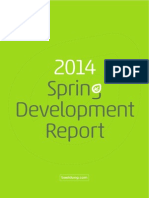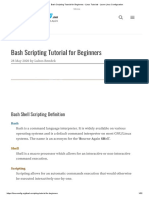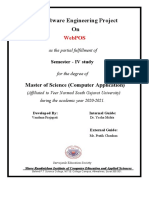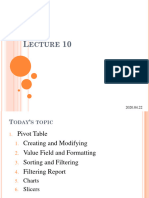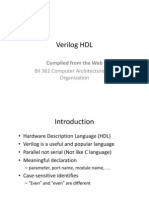0% found this document useful (0 votes)
34 views9 pagesDev Exp 02 DBMS
The document outlines the objectives and concepts of SQL, including its components such as DDL, DML, and integrity constraints. It provides syntax for creating tables, inserting data, and retrieving information from databases, along with examples of domain types and specific SQL commands. Additionally, it includes practical exercises for creating tables and querying data related to clients and products.
Uploaded by
Anshul MauryaCopyright
© © All Rights Reserved
We take content rights seriously. If you suspect this is your content, claim it here.
Available Formats
Download as PDF, TXT or read online on Scribd
0% found this document useful (0 votes)
34 views9 pagesDev Exp 02 DBMS
The document outlines the objectives and concepts of SQL, including its components such as DDL, DML, and integrity constraints. It provides syntax for creating tables, inserting data, and retrieving information from databases, along with examples of domain types and specific SQL commands. Additionally, it includes practical exercises for creating tables and querying data related to clients and products.
Uploaded by
Anshul MauryaCopyright
© © All Rights Reserved
We take content rights seriously. If you suspect this is your content, claim it here.
Available Formats
Download as PDF, TXT or read online on Scribd
/ 9










